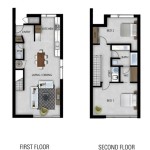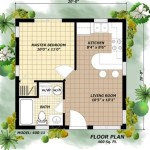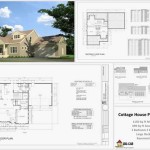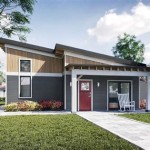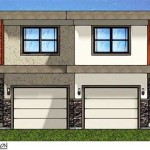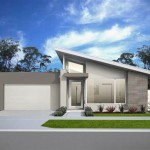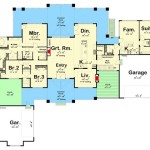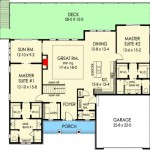Floor Plans for Vacation Homes: Designing for Comfort and Functionality
When planning a vacation home, the floor plan is paramount. It sets the stage for the overall flow, functionality, and enjoyment of the space. Whether you're building a mountain cabin, a beachside retreat, or a cozy lakeside cottage, a well-designed floor plan will ensure your vacation home is both comfortable and welcoming for you and your guests. Beyond aesthetics, a thoughtful layout considers factors like privacy, traffic flow, and the needs of diverse guests. This article explores key considerations for designing effective floor plans for vacation homes.
Prioritize Open Spaces and Flow
Vacation homes are designed for relaxation and social gatherings. Open floor plans are often the preferred choice, allowing for seamless transitions between living areas and maximizing natural light. Large kitchens with center islands, spacious living rooms, and dining areas that flow into outdoor patios create an inviting atmosphere for entertaining. Open floor plans also foster a sense of connectedness and allow for easy interaction among guests. When designing open floor plans, consider the following: *
Define Zones:
While open plans are desirable, thoughtful zoning is crucial to create visual separation. Use different furniture arrangements, area rugs, or strategically placed lighting to define distinct areas like a dining space, a conversation zone, or a reading nook. *Maintain Privacy:
Despite an open layout, ensure some private spaces are included. Private bedrooms and bathrooms provide guests with a retreat for relaxation and personal moments. *Consider Traffic Flow:
Plan the layout to facilitate comfortable movement, especially in high-traffic areas. Ensure pathways are wide enough for guests to easily navigate and avoid bottlenecks around furniture or doorways.Optimize Space for Different Needs
The ideal floor plan adapts to the diverse needs of vacationers. Consider the types of activities your guests might engage in and design accordingly. For example, a family vacation home might require a playroom or a dedicated kids' zone, while a romantic getaway may prioritize a luxurious master suite with a fireplace. Below are some key considerations:
*Guest Bedrooms:
Plan for comfortable guest bedrooms with ample storage space. Consider the possibility of a guest suite with its own bathroom and private entrance for added privacy. *Outdoor Living:
Integrate outdoor living spaces into the floor plan. Consider creating a covered porch or patio, a fire pit area, or a grilling station for al fresco dining and social gatherings. *Functional Kitchen:
Design a functional kitchen that caters to meal preparation and entertaining. Include ample counter space, a large sink, and adequate appliance storage.Think Long-Term and Embrace Flexibility
While vacation homes are for leisure, many factors might influence their use over time. A well-designed floor plan should be adaptable and cater to potential changes such as: *
Changing Family Dynamics:
As families grow or change, the vacation home should be able to accommodate these shifting needs. Consider the possibility of incorporating a multi-generational suite or an additional bedroom for potential future guests. *Potential Rental Income:
If you envision renting out your vacation home, design a plan that optimizes space for guests and maximizes rental potential. This could involve creating separate entrances for different units or including separate living spaces within the property. *Future Accessibility:
Ensure the floor plan includes features that support potential accessibility needs in the future, such as wider doorways and grab bars in bathrooms. *Sustainability and Energy Efficiency:
Choose building materials that are sustainable and consider energy-efficient design features like natural ventilation and efficient lighting. A well-designed floor plan can not only enhance comfort but also contribute to a more sustainable and environmentally conscious vacation home.Designing a floor plan for a vacation home requires a thoughtful approach. By considering the factors outlined above, you can create a space that's both functional and inviting, allowing your guests to truly relax and enjoy their vacation. Working with an architect or designer can be invaluable in navigating the complexities of floor plan design and ensuring your vacation home meets all your needs and expectations.

Four Season Vacation Home Plan 2177dr Architectural Designs House Plans

Rustic Vacation Homes Simple Small Cabin Plans Houseplans Blog Com

Vacation House Plans Home Design Ls H 8337 A Cottage Floor Small
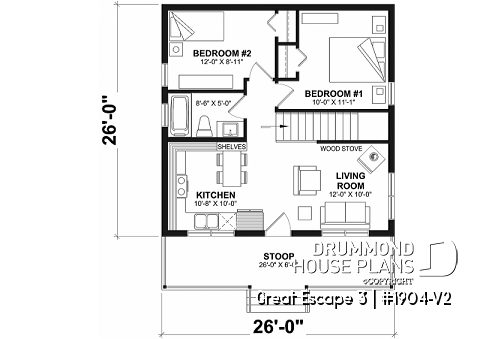
Simple Vacation House Plans Small Cabin Lake Or Mountain

63 Vacation House Plans Ideas

4 Bedroom Floor Plan Ranch House By Max Fulbright Designs

Floor Plan Affordable Orlando Vacation Home House Layouts Layout Plans

Rustic Vacation Homes Simple Small Cabin Plans Houseplans Blog Com

Featured House Plan Bhg 7686

Vacation Floor Plans

